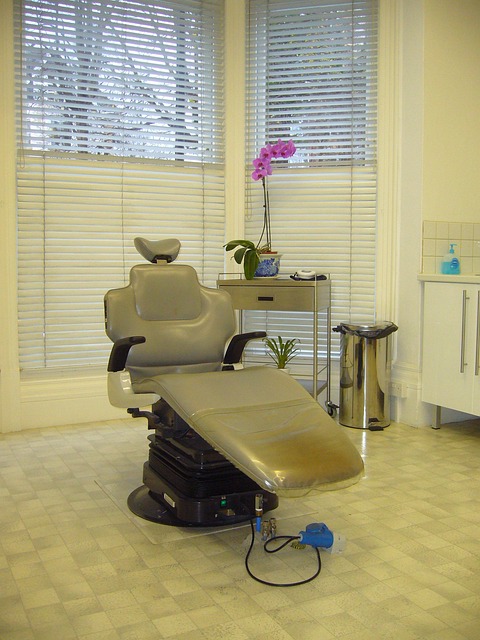Medical office staff eligible for Workers' Compensation (WC) benefits for work-related injuries. WC provides wage replacement and medical coverage; employers must secure adequate insurance to avoid legal repercussions. Healthcare settings prioritize risk management against infectious diseases, workplace violence, ergonomic hazards, slip-and-falls, and HIPAA privacy standards. Employers have significant responsibilities, including safe workspaces, understanding workers' rights, prompt injury reporting, comprehensive training, and robust best practices for claim resolution, ensuring a secure environment through legal compliance for medical office workers comp.
In the fast-paced environment of medical offices, ensuring the safety and well-being of staff is paramount. This article guides you through crucial aspects of protecting your team and maintaining legal security. From understanding workers’ compensation for medical office staff to identifying risks unique to healthcare settings, we explore essential topics. Learn about employer responsibilities, claim processes, best practices, and compliance strategies. By mastering these concepts, you can foster a safer work environment and navigate legal obligations with confidence, benefiting both your employees and your practice.
- Understanding Workers' Compensation for Medical Office Staff
- Identifying Risks Common in Healthcare Settings
- Navigating Legal Obligations: Employer Responsibilities
- Claim Process: What Medical Offices Need to Know
- Protecting Employees: Best Practices and Compliance
- Legal Implications of Negligence and Injury Prevention
Understanding Workers' Compensation for Medical Office Staff

Medical office staff, like any employee, are entitled to Workers’ Compensation benefits if they suffer an injury or contract a illness related to their work. This includes scenarios where employees sustain injuries during routine tasks, such as lifting patient charts or answering phones, as well as more specific risks unique to medical settings, like exposure to infectious diseases.
Understanding workers’ compensation for medical office staff is crucial. It provides financial protection in the form of wage replacement and medical coverage for work-related injuries or illnesses. Employers are legally obligated to secure adequate workers’ compensation insurance to safeguard both their teams and themselves from potential legal repercussions.
Identifying Risks Common in Healthcare Settings

In healthcare settings, several risks are prevalent and require proactive management to protect both patients and medical office workers comp claims. These include potential exposure to infectious diseases, workplace violence, and ergonomic hazards due to repetitive motions or poorly designed workstations. Additionally, healthcare facilities must address the risk of slip-and-fall accidents, as these can lead to serious injuries for staff and visitors alike.
Another critical area is patient privacy and data security, with regulations like HIPAA (Health Insurance Portability and Accountability Act) dictating strict compliance to protect sensitive information. Ensuring proper training for medical office workers on these policies and procedures is essential to minimize legal risks and maintain a safe environment.
Navigating Legal Obligations: Employer Responsibilities

In the world of healthcare, especially in a medical office setting, ensuring the well-being and legal protection of your team is paramount. Employers have a multitude of legal obligations to fulfill, particularly when it comes to worker’s compensation (workers comp). These responsibilities extend beyond providing a safe workspace; they encompass understanding and adhering to local, state, or national laws regarding workers’ rights and benefits, especially in the event of injury or illness related to work.
One crucial aspect is to have comprehensive workers comp insurance in place, covering medical expenses and income replacement for eligible employees. Employers must also maintain accurate records, promptly report injuries, and ensure a smooth claims process. Regular training sessions can educate staff on their rights and responsibilities, fostering a culture of awareness and proactive safety measures. By navigating these legal obligations effectively, employers can foster a secure and supportive work environment for medical office workers comp cases.
Claim Process: What Medical Offices Need to Know

In any medical office, understanding the claim process for workers’ compensation is paramount to protect both your team and maintain legal security. When an employee sustains an injury or develops a work-related illness, it’s crucial to act swiftly. The first step involves acknowledging the incident and providing immediate medical attention to the affected worker. Ensure all necessary documentation is completed accurately and promptly. This includes incident reports, witness statements, and detailed records of the treatment received.
The claim process begins with notifying your insurance carrier about the injury or illness. Medical office workers comp claims typically require specific forms to be filled out by both the employer and the employee. Keep thorough records of all communications, documentation, and medical expenses throughout the process. This not only helps streamline any potential disputes but also ensures you meet the legal requirements for a successful claim.
Protecting Employees: Best Practices and Compliance

In any medical office, ensuring the safety and well-being of employees is paramount. Protecting medical office workers comp (workers’ compensation) claims involves implementing robust best practices and adhering to legal compliance standards. Firstly, conduct regular risk assessments to identify potential hazards specific to your facility. Address these risks through adequate training programs designed to educate staff on workplace safety protocols, including proper lifting techniques, infection control measures, and the use of personal protective equipment (PPE).
Additionally, maintain comprehensive records of all employee injuries, incidents, and related treatments. These detailed logs not only facilitate prompt reporting of claims but also provide valuable data for identifying recurring issues that may require policy or procedural changes. Foster a culture where open communication encourages employees to report accidents or near-misses without fear of reprisal. Regularly update workplace safety guidelines in line with evolving industry standards and regulatory requirements, ensuring every medical office worker comp claim is managed fairly and effectively.
Legal Implications of Negligence and Injury Prevention

In the event of negligence or workplace injuries, medical office personnel face significant legal implications. Medical offices have a duty of care to ensure the safety and well-being of their employees. Negligence claims can arise from various incidents, such as slip and fall accidents, exposure to hazardous substances, or even inadequate training leading to on-the-job injuries. These situations may result in workers’ compensation claims, where injured workers seek medical coverage and wage replacement.
To stay legally secure, medical offices must implement robust safety protocols, regularly train staff, and promptly address any potential hazards. Preventative measures are key to mitigating risks and avoiding costly legal battles related to negligence. By prioritizing employee safety and adhering to workers’ compensation regulations, medical office managers can foster a secure work environment and protect their practice from legal repercussions.
